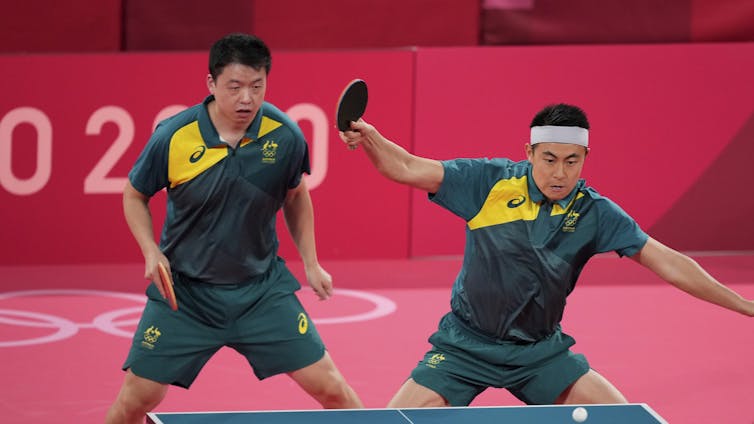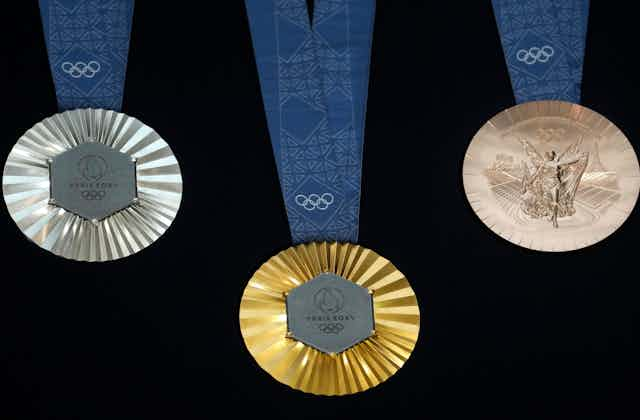The Australian Olympic Committee (AOC) has proposed a new strategy to bolster the financial health of Olympic sports, ranging from minor sports such as table tennis to dominant codes such as basketball and swimming.
At the heart of this initiative is a plan to permit individual sports federations to independently market the iconic Olympic rings within Australia.
This marks a significant departure from the traditional approach of collective Olympic team sponsorships.
Spearheaded by AOC chief executive Matt Carroll, the move is designed to directly funnel sponsorship revenue into the sports themselves. This is particularly critical for sports that face significant financial challenges. As Carroll stated, “for a small sport, $50,000 is a lot of money.”
Carroll has underscored the precarious financial positions of these organisations, pointing out that even a modest influx of commercial funding could dramatically enhance their sustainability and growth.
The first hurdle to jump over
Despite the ambition of this strategy, the AOC faces an uphill battle in its implementation, with two primary obstacles standing in the way.
The first is the capability gap within smaller sports organisations.
Leveraging the Olympic brand effectively requires a sophisticated approach to marketing – many smaller federations are already stretched thin, lacking the resources, expertise, and person-power to mount successful marketing campaigns.
This capability gap raises questions about their ability to fully capitalise on the opportunity presented by the AOC’s new policy.

Fears of ‘obstruction and oblivion’
The second significant hurdle is rooted in the governance structure of Australian sports.
The federated system, while having its merits, poses considerable challenges to the cohesive and strategic application of the AOC’s initiative.
In a federated sport system, independent organisations oversee different levels (regional and state) of the sport under a central governing body (national), while maintaining autonomy in their respective jurisdictions.
This system tends to encourage siloed operations rather than unified, collaborative efforts.
Kieren Perkins, chief executive of the Australian Sports Commission, has criticised this model for leading to “obstruction and oblivion”.
Read more: Does hosting the Olympics, the World Cup or other major sports events really pay off?
Money matters
The AOC’s plan is not merely a theoretical exercise – it is driven by financial imperative.
The committee has estimated an additional $2 billion is required) by 2032 to meet the needs of high-performance sports in Australia, with $1.5 billion of this earmarked specifically for enhancing athletes’ competitive capabilities.
This substantial figure underscores the critical need for innovative funding solutions, of which the AOC’s strategy represents a key component.
While the AOC’s initiative is interesting, it is but one of several potential pathways to addressing the funding shortfall faced by Olympic sports in Australia.
Other models and strategies have emerged globally, offering valuable lessons and alternatives.
For example, the United States Olympic and Paralympic Committee (USOPC) has introduced access to their Team USA House in Paris as part of a hospitality package. This move underscores the potential for leveraging Olympic assets for direct funding, independent of government support.
Similarly, the concept of a national sports lottery has been floated within Australia. Such schemes have had a significant impact in other countries, notably Great Britain.
The British sports lottery, instrumental in the country’s Olympic success, especially post-2012 London Games, exemplifies how targeted funding mechanisms can transform a nation’s Olympic fortunes.
Another innovative approach to sports funding is the redirection of a portion of government taxes collected from sports betting.
Given the prevalence of sports betting in Australia, this represents a potentially untapped source of revenue that could provide a sustainable funding stream for sports organisations.
The recent decision by World Athletics to award cash prizes for medal performances introduces an additional dimension to the discussion of athlete and sport funding.
In Australia, gold, silver, and bronze medallists receive bonuses of $20,000, $15,000 and $10,000 respectively. This is likely to go up as Australia prepares to host the 2032 Games.
While such measures may benefit major sports with higher visibility, they also risk widening the financial gap between these and the smaller, less commercially attractive disciplines such as table tennis.
In other words, sports with bigger budgets can compensate their athletes while smaller sports can’t, so the gap may widen.
Looking ahead to the 2032 Brisbane Olympics
Looking ahead to 2032, it’s crucial for Australia to find strong, lasting ways to support sports.
This challenge goes beyond just helping elite athletes: it’s about enhancing the whole sports landscape to make it more inclusive and enjoyable for everyone.
Initiatives such as Play Well, alongside Queensland’s investment in a new centre for Parasports at the University of Queensland, are steps towards improving access to sports for individuals regardless of their abilities.
These efforts highlight the need for cooperation across various sectors and the importance of innovative funding methods.

